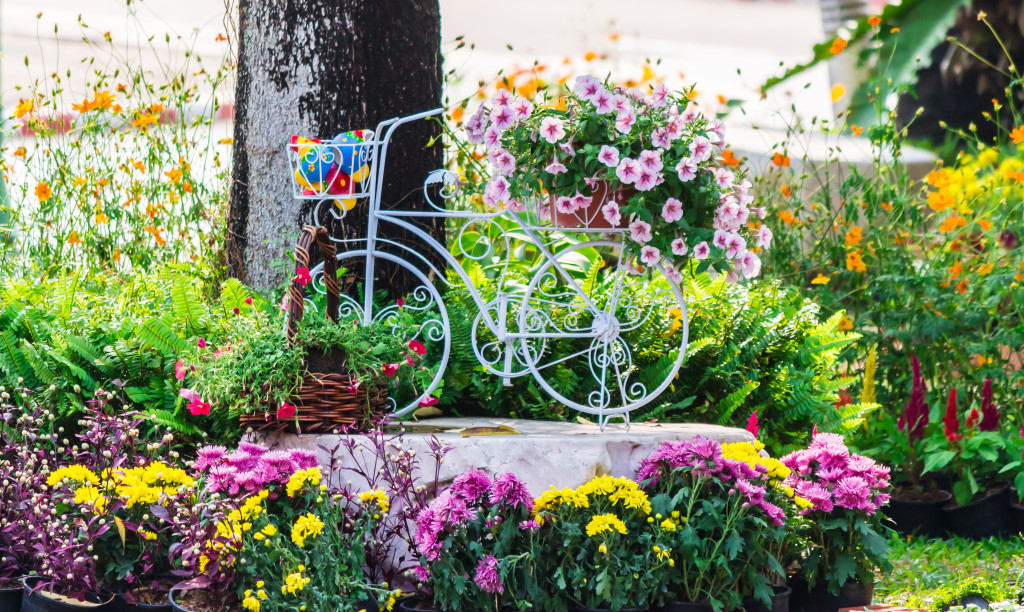Many people think starting a flower garden is difficult, but it is quite easy! Most of the work is in the planning stages, and once you have a plan in place, the rest is easy. You can start a flower garden with just a few simple steps. With a bit of planning and care, you can have a beautiful flower garden in no time. This blog post will give you some tips on how to get started.
1. Find the right location
The first step is to choose the right location for your garden. You will need to find a spot with plenty of sunlight and good drainage. This is important because your flowers need plenty of sunlight to grow well, and good drainage will help prevent your plants from getting waterlogged. Depending on your home, you may have a spot in your yard that gets plenty of sun, or you may need to find a location away from trees or other structures that could block the sun.
You can build a garden room if the open space is too harsh for your flower garden. This will help to control the environment and make it easier to care for your plants. A covered porch or patio can also work well, but you may need to build a greenhouse for delicate flowers. Always consult with a professional before you build anything on your property.
2. Prepare the soil
The next step is to prepare the soil for your flower garden. You can add some organic matter, such as compost or manure, to the ground to help improve its quality. You can also have your soil tested to determine what nutrients it lacks. This will help you add the suitable amendments to the earth to ensure that your plants have everything they need to thrive.
Some flowers require special soil conditions, such as acidic or alkaline soils. If you are growing these flowers, find the specific requirements before planting them. You can ask a local nursery for professional advice.
3. Choose the right plants
Not every flower will do well in every location. When choosing plants for your garden, selecting varieties that will thrive in the conditions where you live is essential. If you are unsure about which plants to choose, ask a professional at your gardening center for advice.
When you have selected the right plants, it is essential to plant them in the right way. Make sure to follow the instructions on the seed packet or plant tag. This will help to ensure that your plants have the best chance of surviving and thriving. For example, digging a hole twice as wide as the root ball of the plant will help to encourage good root growth. Don’t forget to add some fertilizer to the spot before you plant!

4. Water and fertilize regularly
Once your plants are in the ground, it is essential to water them regularly. They will need about an inch of water per week and more in hot weather. Be careful not to over or under-water your plants. Too much or too little water can both be detrimental to plant health. Sticking your finger in the soil is an excellent way to tell if your plants need water. It is time to water if it feels dry several inches below the surface.
In addition to watering, you will also need to fertilize your plants regularly. This will help them to grow strong and healthy. Many different types of fertilizer are available, so choosing one designed specifically for flowers is essential. Some fertilizers are slow-release, which means that they will provide your plants with nutrients over a long period. Others are quick-release, meaning they will quickly provide nutrients to your plants.
5. Deadhead spent flowers
Once your flowers bloom, you will need to deadhead them as needed. Deadheading means removing spent flowers from the plant. This helps to encourage new growth and to keep your plants looking tidy. To deadhead a flower, snap the stem off at the base of the flower. You can also use pruning shears to cut the stem.
But deadheading is not just about looks. Removing spent flowers also helps to prevent your plants from self-seeding. This means they will put all their energy into producing new growth rather than making seeds. Deadheading also helps to extend the blooming period of many flowers.
Starting a flower garden is a great way to add some beauty to your yard. Don’t be scared to start – with a bit of planning and care, you can have a beautiful garden that will bloom for years to come! Always consult with a professional if you have any questions or concerns. These simple tips can help you have a gorgeous garden in no time!
